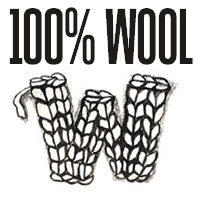For this evening’s post we have Rachel Atkinson here for a Q&A session on labelling. Many of you may know Rachel from following Wovember last year, or through knitting with her 100% British Daughter of a Shepherd yarn. Having looked at the labelling of wool from a legislative EU position and from two people within the British wool industry previously this week, we hope you’ll enjoy yet another perspective from Rachel, and that you’ll help us conclude our week on LABELLING by having your say on this topic in the comments. Many thanks to Rachel for joining us for this Q&A this evening; all content + images © Rachel Atkinson and used with kind permission.
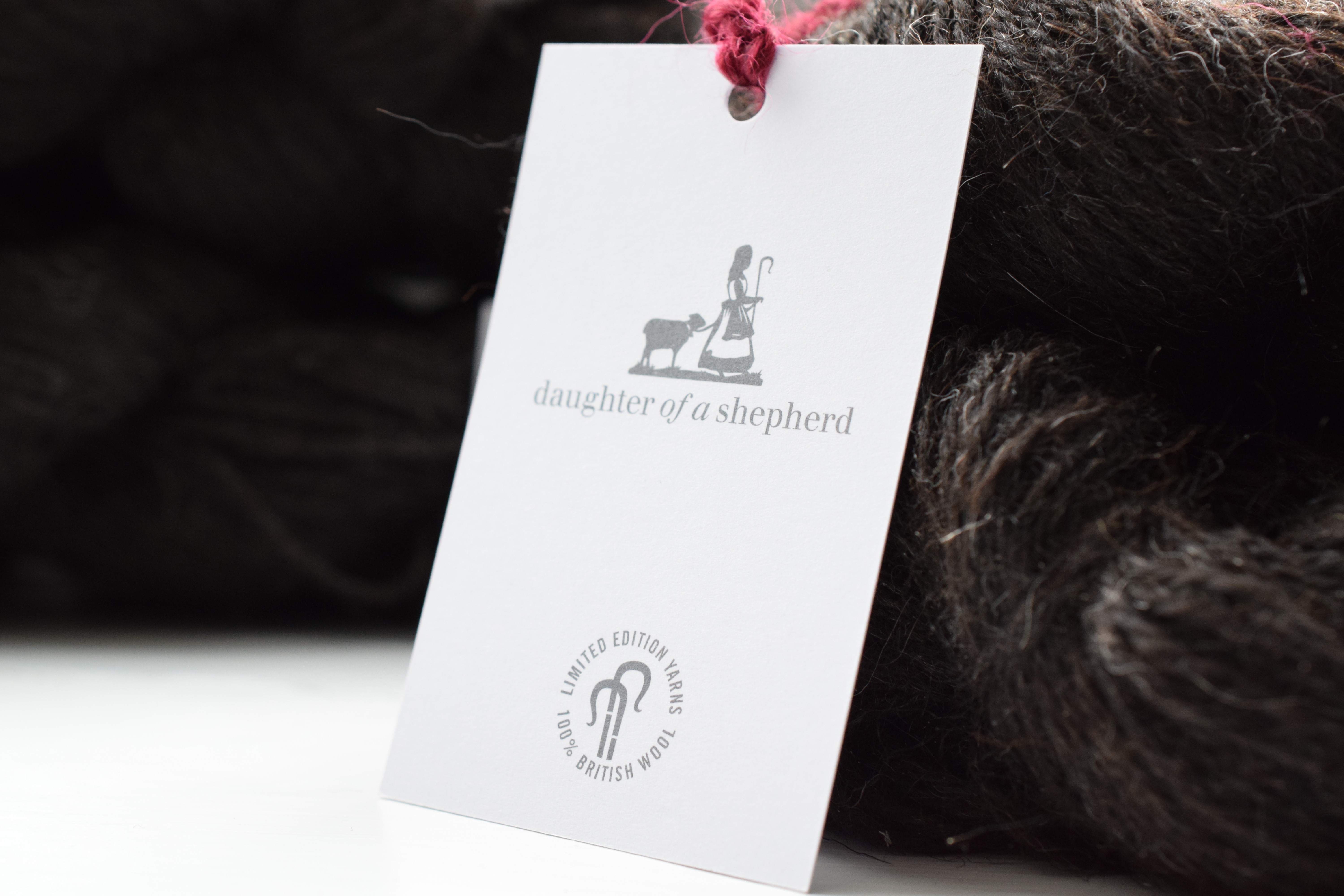
Wovember: As a buyer of yarn and a knitter, what information do you love to see on the ball-band or label for yarn?
Rachel: For me yarn labels should contain everything I need to know in a concise and easy to read format – they need to convey a lot of information at a glance.
Firstly I want to know the fibre content, meterage, weight of the skein and a rough guide to an appropriate needle size, then I will look for the place of origin and see what I can decipher from that – this is when things get tricky:
Made in Italy doesn’t tell me where the fibre came from, likewise Made in Britain doesn’t necessarily mean the wool is British, and then we get into ‘when is wool labelled British Wool not actually British Wool’? The answer being when it carries the British Wool Blue Label. Depicting a shepherd’s crook and the Union Jack, the Blue Label is licensed out for use on products containing 50% or more of British Wool. It never felt right that a product could be labelled as British Wool whilst not actually being so and it has been good to see the Wool Board have recently address this by adding a Gold (70% British) and Platinum (100% British) standard to the range… but I digress!
Wovember: Were there any product labels out there which especially excited you when you were thinking about your own yarn labels? Any inspirations you can cite – not necessarily from wool but more generally for products that ultimately come from the land?
Rachel: My working history is firmly entrenched in retail; supermarkets, department stores, corner shops, book stores, a local yarn store and even a personal shopper for high end boutiques and so I have been looking at labels for all manner of products for most of my adult life. When I began thinking about the labels for my Daughter of a Shepherd yarn I already had a good inbuilt sense of likes and dislikes about labels – it’s amazing what your brain stores and you never know when it will come in handy.
A Pinterest board filled with graphics, type and company branding that I love contains all sorts of inspiration, from ceramic makers marks and monograms and vintage cotton spools to luggage labels and soap packaging. A passion for food led me to restaurant menu layout and then Mr K returned home from a work trip to Lisbon with the most wonderful paper packaging from tinned fish and custard tarts. It was these that provided the starting point for the Daughter of a Shepherd labels.
The beautiful graphics featured on the A Verb For Keeping Warm yarn labels are one of my all-time favourites and reflect the style of the company and what they are about so clearly. It’s so important for your label to speak for your yarn when you’re not there in person to do it.
Wovember: When working on your labels for Daughter of a Shepherd yarn, what felt really important to include?
Rachel: Alongside the standard weight, meterage washing instructions etc, I knew I absolutely had to include the shepherd, the area where the sheep graze, their clip date and a reflection that the yarn is a 100% British product from fleece, through processing and into spinning. All other info, whilst being equally important was secondary to these.
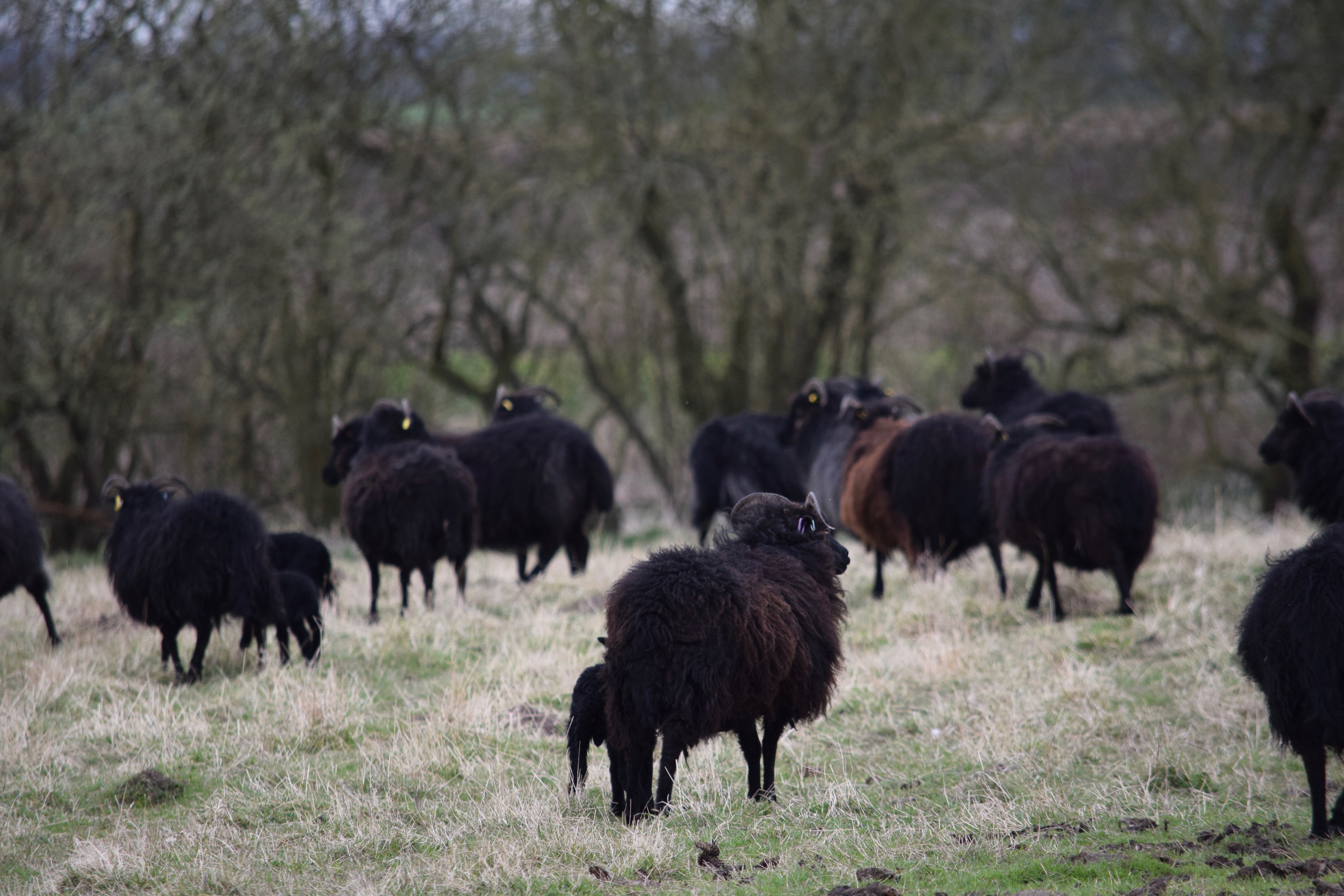
I would have loved to include a bit of blurb about the story, and had I chosen to use a ‘belly band’ style label rather than the ‘swing ticket’ I went with, then there would have been room for something. Having worked in a yarn store I had a whole list of pros and cons for the two different styles and my personal preference was for the swing ticket which put a restriction on the amount of information I could include.
Wovember: What do you like best of all about the way the labels have turned out?
Rachel: When I started thinking about the brand image I worked with a really great graphic designer, Anthony Duncan-Smith, who developed my logo which I love love love, but he also came up with the small circular ‘stamps’ containing information about the shepherd, estate and clip in a clever and design conscious way inspired by the ceramic makers marks. The label is clean, bright and clear – everything I could have hoped for!
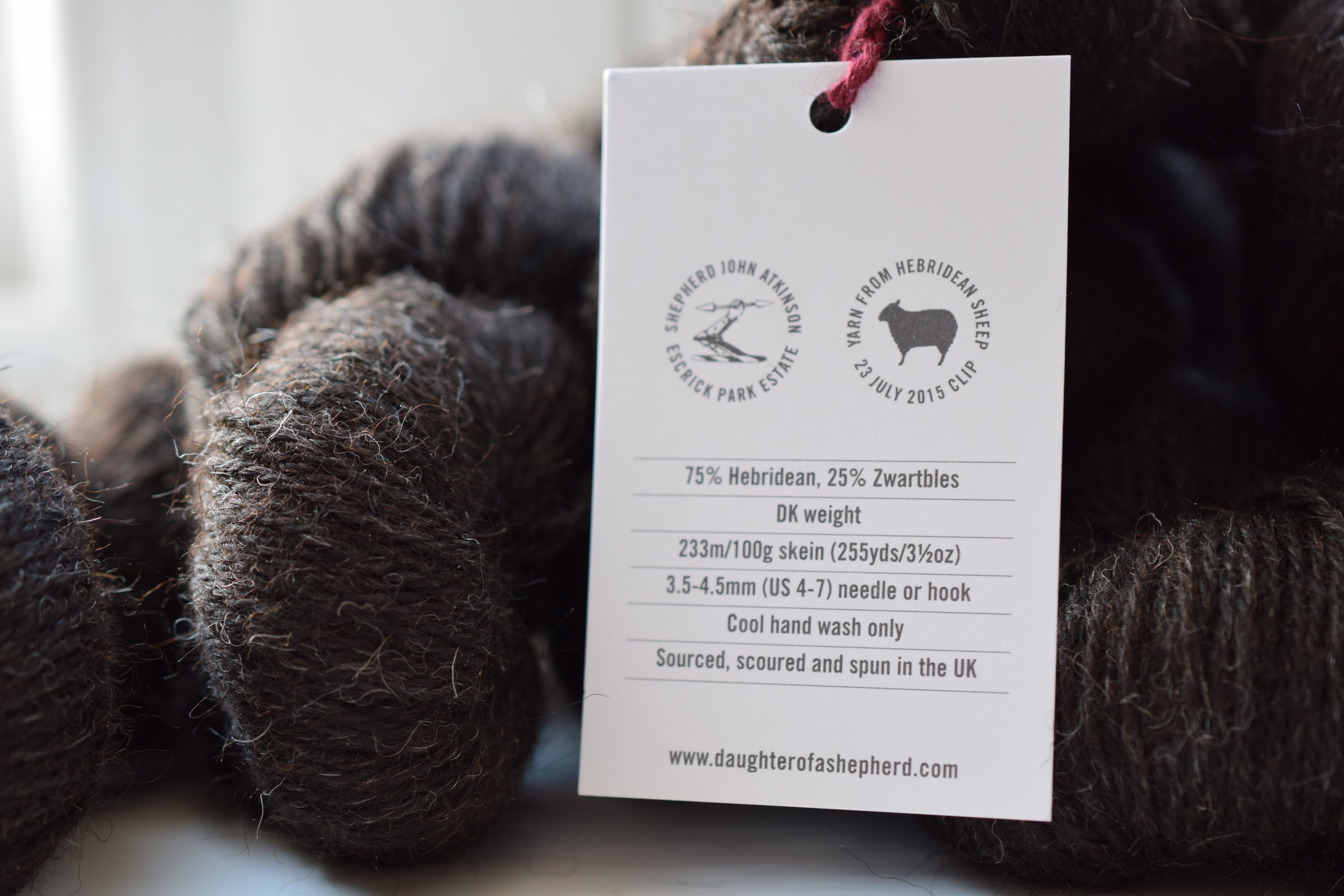
As a geeky aside, I also particularly like the twine holding the label to the skein which I sourced from a long established UK rope company.
Wovember: We feel that the labels are almost a political statement on what is possible in terms of traceability, provenance and reminders of where things come from… do you feel this way about it too?
Rachel: Hmm, not so much – they just include what I felt important to share with others as a way to demonstrate my knowledge of the yarn. ‘Transparency’ is one of those awful buzzwords, but I have nothing to hide and with so many people supporting the yarn and reading the story it felt good to be able to be completely ‘transparent’ with the labelling.
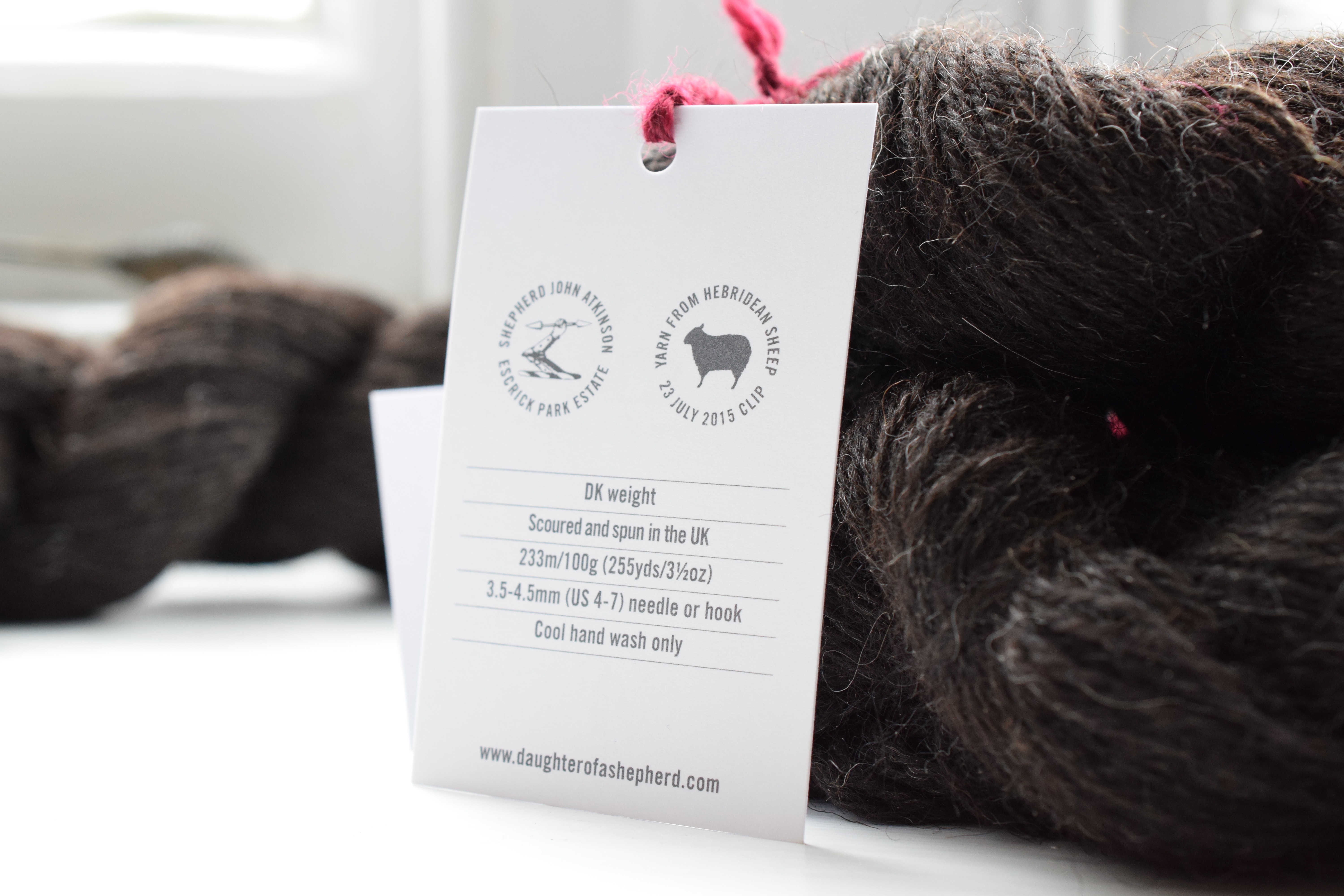
Wovember: Could you say something about scale and labelling as it strikes me that the closer one is to a product, the more detailed and specific you can be about its composition and origins… do you think that some of the things that are missing from the labels of products that are mass produced are absent simply because at some point it just gets too big to keep a handle on the supply chain?
Rachel: Absolutely. I doubt that a large Italian mill could tell you where the fleece in the tops they are spinning came from, likewise a carpet manufacturer in Britain probably wouldn’t be able to list the breeds in the blend for their product. Many small British yarn producers don’t even have this information due to the way fibre is sorted at the Wool Board and blended at the processors – the vast majority of fleece being graded by characteristics rather than breed type.
I’m not sure if this is something that could be changed to such a big degree, but it would be good to see more yarn companies being able to pinpoint where the fibre in their products is from at the very least even if they can’t show you the exact field.
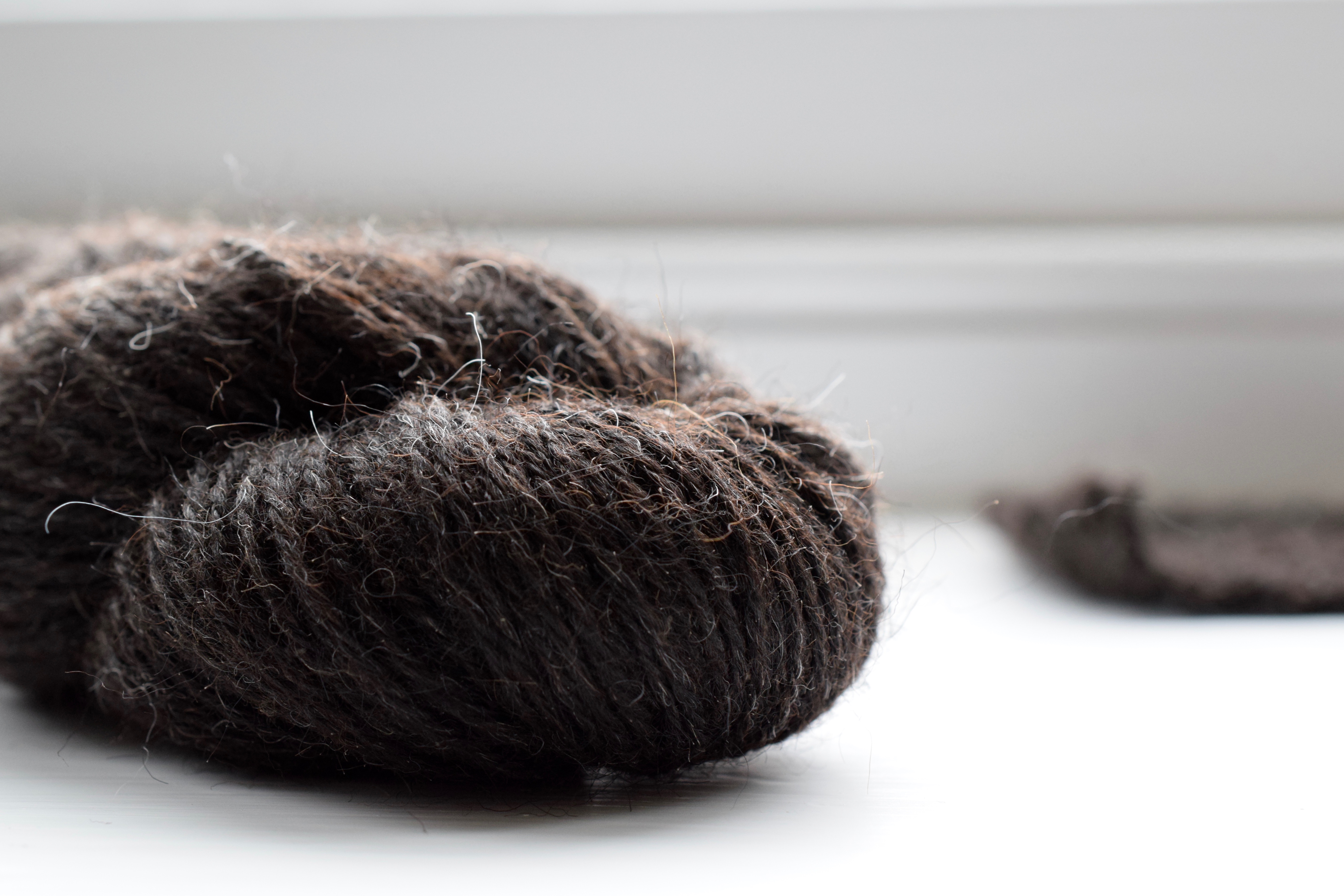
Wovember: Those are very good points that we will likely return to later in the month! Is there anything else you’d like to say to our readers about the labels for Daughter of a Shepherd?
Rachel: Yes! In a WOVEMBER EXCLUSIVE, I can reveal we are getting very close to launching a 4ply/fingering weight version of the Hebridean & Zwartbles yarn and have just sent the new labels to print. One thing that wasn’t included on the DK label was a standard tension/gauge measurement as a point of reference and so this has been added for the new yarn.
It would be really interesting to hear what WOVEMBER supporters think should be included in a label or what is surplus to requirement.
Wovember: Thank you for the EXCLUSIVE! Readers – please leave your comments for Rachel and for us – we have said quite a bit about labelling this week on the Wovember blog and would love for you to have your say.
Rachel Atkinson is the owner and purveyor of Daughter of a Shepherd yarn, and a Designer and Technical Editor. She dreams of owning her own flock of sheep and building a library. You can buy her yarn here, read her blog here, or find her on Instagram, Twitter, Ravelry and Pinterest under the username knittingtastic.
